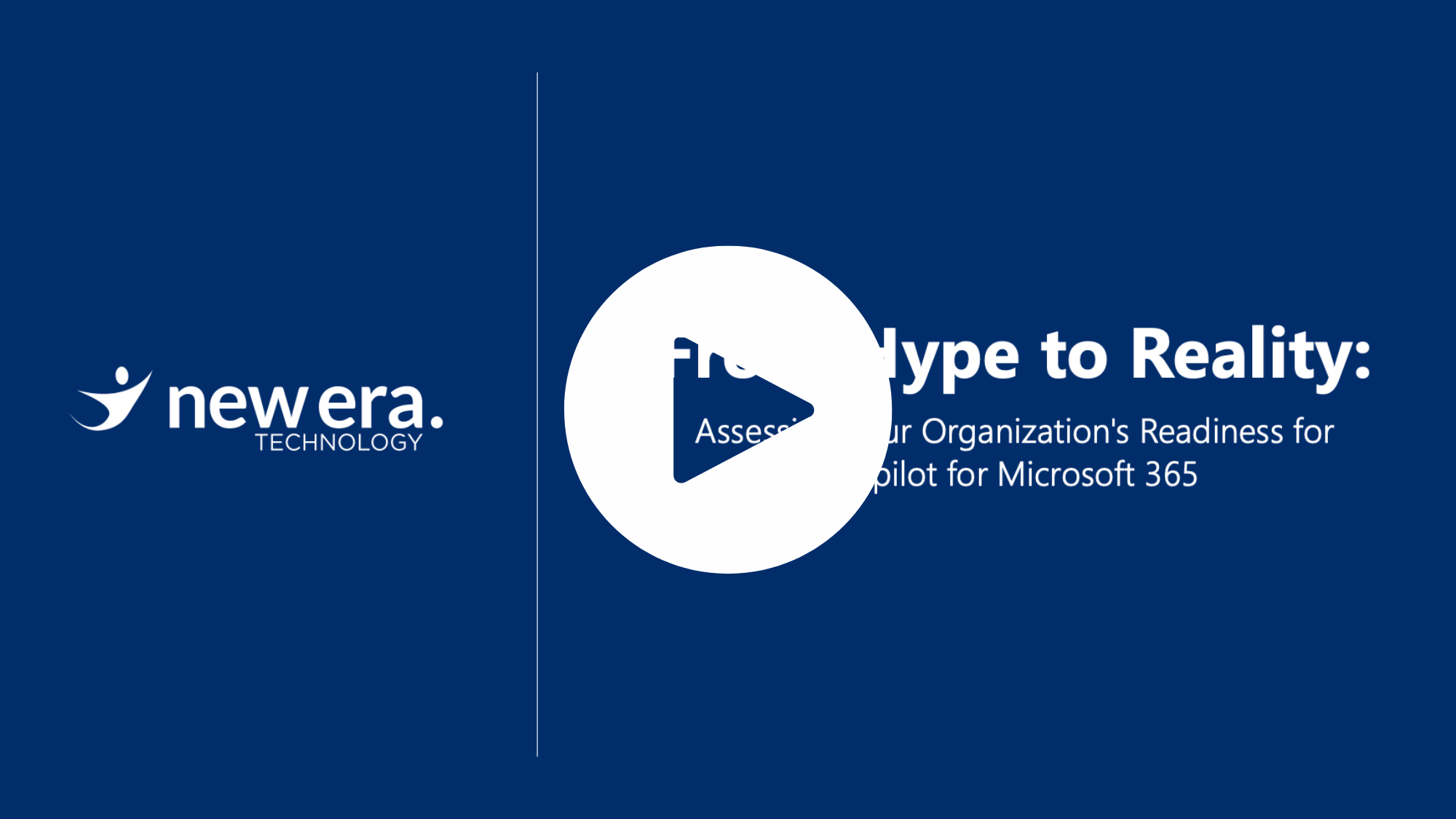Why AI?
Copilot for Microsoft 365 offers many capabilities and improvements to user experience. Before we get too excited about the possibilities, it is important to pause and ask ourselves a fundamental question: Why AI for my organization?
Copilot for Microsoft 365 represents a change in how we interact with technology, aiming to make our day-to-day tasks more intuitive and efficient. However, this change brings to light an important consideration—the risk of not fully embracing or understanding how to utilize such advancements. Without proper enablement, users might find themselves struggling with or, worse, sidelining Copilot after a few unsuccessful attempts. This scenario highlights a crucial challenge: without strategic integration and adoption, significant investments in AI may result in minimal returns.
It’s essential to recognize that our engagement with AI, particularly tools like Copilot for Microsoft 365, should be driven by more than the allure of cutting-edge technology. The decision to integrate AI into our workspaces must be anchored in a clear understanding of its potential to solve real problems, enhance operational efficiency, and foster innovation.
In thinking about the integration of Copilot for Microsoft 365—or any AI technology, for that matter—it’s first important to assess three key areas: organizational strategy, user enablement, and technical readiness.
Organizational Strategy
What are your reasons for considering implementing Copilot for Microsoft 365 within your organization?
In other words, are we seeking to leverage AI to stay ahead of industry trends, or are we reacting to the fear of falling behind? How do we differentiate between the hype and the genuine value these technologies can bring to our specific business processes?
Processes
Which business processes or functions are you prioritizing for improvement with Copilot for Microsoft 365, and why?
Commitment
What is your organization’s level of commitment to continuous improvement regarding the use of Copilot for Microsoft 365?
Reflecting on these questions allows us to ensure that our move toward digital transformation is not just about keeping up with technological advancements but about strategically aligning these tools with our organization’s objectives and values.
User Enablement
- Commitment What is your organization’s level of commitment to ensuring employees are effectively enabled in the use of Copilot for Microsoft 365? An excellent follow-up question is, “How do you envision addressing different learning styles and technology comfort levels among your staff to ensure widespread adoption and proficiency?”
- Infrastructure What does your current training infrastructure look like, and how do you envision integrating Copilot for Microsoft 365 training into this framework?
- Measurement How do envision measuring the effectiveness of user enablement and training programs for Copilot for Microsoft 365?
Technical Readiness
- Infrastructure What known limitations or challenges with your current IT setup could impact the implementation of Copilot for Microsoft 365?
- Data How do you manage data security and compliance currently, and what specific concerns do you have regarding the integration of Copilot for Microsoft 365?
- Support What are your expectations for ongoing technical support and maintenance post-implementation?
Investment Considerations
- Investment What cost or financial considerations may impact implementation and continuous improvement?
- ROI How will you define and measure the return on investment for the Copilot for Microsoft 365 implementation?
- Success What key performance indicators (KPIs) are most important to your organization in evaluating implementation and ongoing success?
The journey to incorporating AI into our workplaces is as much about people and processes as it is about technology. It is important to keep these considerations in mind, exploring not only the ‘why’ behind AI adoption but also how we can navigate the challenges and opportunities it presents, ensuring our journey towards digital transformation is both successful and sustainable.
The Risks of Not Pausing to Explore the Why
It is crucial to understand the risks associated with not carefully considering the foundational question of “Why AI”. Jumping into the adoption of AI without a deep understanding of the motivations, needs, and challenges specific to our organization can lead to several unintended consequences.
1. User adoption challenges can emerge. Without a clear understanding of why we’re integrating Copilot into our workflows, users may find themselves struggling with or even ignoring the tool after a few unsuccessful attempts. This lack of engagement not only undermines the potential benefits of Copilot but can also result in wasted resources and missed opportunities for enhancing productivity and innovation. Essentially, if the tool isn’t seen as directly addressing a specific need or improving existing processes, its presence could be more of a distraction than a benefit.
2. The risk of inefficient resource allocation. Hastily moving to adopt AI technologies without a strategic rationale often leads to misallocated budgets and human resources, diverting valuable assets from areas that might need them more critically. This misdirection can hamper other initiatives and slow down overall organizational progress, leading to a scenario where the investment in AI does not deliver the expected return.
3. Risks associated with data access and security must not be underestimated. Copilot for Microsoft 365, like any AI tool, requires access to vast amounts of data to function effectively. Without a clear ‘why’ that includes a thorough assessment of data needs, usage, and potential vulnerabilities, organizations may inadvertently expose sensitive information or fail to comply with data protection regulations. This oversight can have significant legal and reputational repercussions, making it imperative to consider these aspects before proceeding with implementation.
Without thoughtfully considering why we’re adopting AI, we risk misaligning with organizational goals. The allure of new technology can sometimes overshadow the need to ensure that every tool and process aligns with the broader objectives and strategic direction of the organization. This misalignment can lead to initiatives that, while technologically advanced, do not actually propel the organization toward its goals, resulting in strategic dissonance.
Understanding the ‘why’ ensures that we’re not just following a trend but are making informed, strategic decisions that will bring real value to our organization, safeguard our data, and align with our long-term goals. By acknowledging and addressing these risks upfront, we can set the stage for a more successful and transformative integration of AI tools like Copilot into our daily workflows and organizational strategy.
Keep Learning: Watch, “From Hype to Reality: Assessing Your Organization’s Readiness Copilot for Microsoft 365,” below.

Lorena Lane
Senior User Experience Consultant at New Era Technology
Bringing clarity and solving problems in complex ecosystems through UX + Exploring how to optimize Ai for UX and UX for Ai + Examining the intersections of humans and technology while balancing philosophy and pragmatism

Steve Daly
Senior Vice President Solutions, Global Digital Transformation
Steve Daly is the Senior Vice President of Solutions, Global Digital Transformation at New Era Technology, and specializes in cloud-native development and application modernization. He brings more than 30 years of experience providing IT solutions to start-ups, local, state, and Federal governments, Midmarket as well as Fortune 500 companies and organizations.

 Canada
Canada Australia
Australia New Zealand
New Zealand UAE
UAE United Kingdom
United Kingdom





